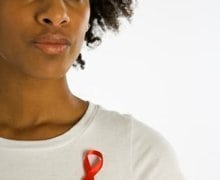Prevention programs, education and testing credited with decrease
For the first time, the rate of new HIV infections among African-American women declined 21 percent between 2008 and 2010, according to a Centers for Disease Control and Prevention (CDC) report released last winter.
“There is much to be encouraged about in these new findings, particularly in terms of overall stability of new HIV infections and a decrease in HIV infections among African-American women,” says Jeffrey Parsons, Ph.D., professor in the psychology department at Hunter College in New York City and director of the college’s Center for HIV/AIDS Educational Studies and Training. This drop in new infections, he says, “is likely due to very targeted behavioral intervention programs for African-American women.”
While this good news is a step in the right direction, black women still account for nearly two-thirds of new infections among American women, according to the CDC report.
Other minorities also are disproportionately affected. Blacks represent just 14 percent of the population, yet they account for 44 percent of new HIV infections. Hispanics are 16 percent of the population, but account for 21 percent of new infections.
The overall number of new infections among Americans has remained stable at about 50,000 per year over the last decade. The CDC says this indicates that prevention programs, testing and treatment are having an impact, but rates of new HIV infections are still too high.






